Supreme Court Upholds Religious Exemption To Employment Discrimination Laws
A far-reaching decision from the Supreme Court protecting religious liberty.
Yesterday a unanimous Supreme Court handed a strong rebuke to the Obama Administration by rejecting an effort by the EEOC to enforce a provision of the Americans With Disabilities Act against a religious organization:
WASHINGTON — In what may be its most significant religious liberty decision in two decades, the Supreme Court on Wednesday for the first time recognized a “ministerial exception” to employment discrimination laws, saying that churches and other religious groups must be free to choose and dismiss their leaders without government interference.
“The interest of society in the enforcement of employment discrimination statutes is undoubtedly important,” Chief Justice John G. Roberts Jr. wrote in a decision that was surprising in both its sweep and its unanimity. “But so, too, is the interest of religious groups in choosing who will preach their beliefs, teach their faith and carry out their mission.”
The decision gave only limited guidance about how courts should decide who counts as a minister, saying the court was “reluctant to adopt a rigid formula.” Two concurring opinions offered contrasting proposals.
Whatever its precise scope, the ruling will have concrete consequences for countless people employed by religious groups to perform religious work. In addition to ministers, priests, rabbis and other religious leaders, the decision appears to encompass, for instance, at least those teachers in religious schools with formal religious training who are charged with instructing students about religious matters.
Douglas Laycock, a law professor at the University of Virginia who argued the case on behalf of the defendant, a Lutheran school, said the upshot of the ruling was likely to be that “substantial religious instruction is going to be enough.”
Asked about professors at Catholic universities like Notre Dame, Professor Laycock said: “If he teaches theology, he’s covered. If he teaches English or physics or some clearly secular subjects, he is clearly not covered.”
The case, Hosanna-Tabor Church v. Equal Employment Opportunity Commission, No. 10-553, was brought by Cheryl Perich, who had been a teacher at a school in Redford, Mich., that was part of the Lutheran Church-Missouri Synod, the second-largest Lutheran denomination in the United States. Ms. Perich said she was fired for pursuing an employment discrimination claim based on a disability, narcolepsy.
Ms. Perich had taught mostly secular subjects but also taught religion classes and attended chapel with her class.
“It is true that her religious duties consumed only 45 minutes of each workday,” Chief Justice Roberts wrote, “and that the rest of her day was devoted to teaching secular subjects.”
“The issue before us, however, is not one that can be resolved with a stopwatch,” he wrote.
Instead, the court looked to several factors. Ms. Perich was a “called” teacher who had completed religious training and whom the school considered a minister. She was fired, the school said, for violating religious doctrine by pursuing litigation rather than trying to resolve her dispute within the church.
The teacher went to the EEOC, which pursued a claim on her behalf under the ADA despite a long-standing rule that had been followed by previous Administrations that employment discrmination laws do not apply to so-called “ministerial” employees of religious organizations, a defense the Church raised in subsequent litigation. The EEOC, meanwhile, aided by the Obama Justice Department, took the position that there should be no exemption to the application laws for ministerial employees at all:
During the oral argument, Leondra Kruger, the U.S. solicitor general’s assistant who represented the Equal Opportunity Employment Commission, was asked whether the high court should accommodate even a limited ministerial exception. Kruger responded that the justices should make no distinction between secular or religious employers.
“That is extraordinary,” Justice Antonin Scalia responded. “We are talking here about the free exercise clause and about the establishment clause, and you say they have no special application?”
More significantly, the liberal Justice Elena Kagan was also startled by the government’s stance. “I, too, find that amazing,” Justice Kagan remarked.
The comments by the justices increased the likelihood that the ministerial exception would survive this unprecedented challenge.
Indeed, it may well have been the Government’s insistence on a hardline no-exemptions position that pushed the Court to not only decide this case unanimously but to come to the position that it did. The logical extension of the government’s position, for example, would have been that a woman would have theoretically had a cause of action under applicable to civil rights laws to sue the Roman Catholic Church for refusing to ordain her has a Priest, and it would have actually lent undue merit to the fears of some opponents of same-sex marriage who claim that legalizing the institution would be a threat to religious liberty.
Chief Justice Roberts, writing for the unanimous Court, laid out the Ministerial Exception as grounded in, and indeed required by, the First Amendment itself:
Until today, we have not had occasion to consider whether this freedom of a religious organization to select its ministers is implicated by a suit alleging discrimination in employment. The Courts of Appeals, in contrast, have had extensive experience with this issue. Since the passage of Title VII of the Civil Rights Act of 1964, 42 U. S. C. §2000e et seq., and other employment discrimination laws, the Courts of Appeals have uniformly recognized the existence of a “ministerial exception,” grounded in the First Amendment, that precludes application of such legislation to claims concerning the employment relationship between a religious institution and its ministers.
We agree that there is such a ministerial exception. The members of a religious group put their faith in the hands of their ministers. Requiring a church to accept or retain an unwanted minister, or punishing a church for failing to do so, intrudes upon more than a mere employment decision. Such action interferes with the internal governance of the church, depriving the church of control over the selection of those who will personify its beliefs. By imposing an unwanted minister, the state infringes the Free Exercise Clause, which protects a religious group’s right to shape its own faith and mission through its appointments. According the state the power to determine which individuals will minister to the faithful also violates the Establishment Clause, which prohibits government involvement in such ecclesiastical decisions.
The EEOC and Perich acknowledge that employment discrimination laws would be unconstitutional as applied to religious groups in certain circumstances. They grant, for example, that it would violate the First Amendment for courts to apply such laws to compel the ordination of women by the Catholic Church or by an Orthodox Jewish seminary. Brief for Federal Respondent 31; Brief for Respondent Perich 35-36. According to the EEOC and Perich, religious organizations could successfully defend against employment discrimination claims in those circumstances by invoking the constitutional right to freedom of association—a right “implicit” in the First Amendment. Roberts v. United States Jaycees, 468 U. S. 609, 622 (1984). The EEOC and Perich thus see no need—and no basis—for a special rule for ministers grounded in the Religion Clauses themselves.
We find this position untenable. The right to freedom of association is a right enjoyed by religious and secular group alike. It follows under the EEOC’s and Perich’s view that the First Amendment analysis should be the same, whether the association in question is the Lutheran Church, a labor union, or a social club. See Perich Brief 31; Tr. of Oral Arg. 28. That result is hard to square with the text of the First Amendment itself, which gives special solicitude to the rights of religious organizations. We cannot accept the remarkable view that the Religion Clauses have nothing to say about a religious organization’s freedom to select its own ministers.
(…)
The interest of society in the enforcement of employment discrimination statutes is undoubtedly important.But so too is the interest of religious groups in choosing who will preach their beliefs, teach their faith, and carry out their mission. When a minister who has been fired sues her church alleging that her termination was discriminatory, the First Amendment has struck the balance for us. The church must be free to choose those who will guide it on its way.
Roberts is careful to note in the opinion that the Court is not setting a hard-and-fast rule regarding what kind of positions fall under this “Ministerial Exemption,” clearly that is a matter that will have await the consideration of future claims by other litigants. As a preliminary matter, though, it seems clear that any position that involves a religious function is likely to be covered by the exemption even when, as in this case, the position in question also includes secular activities that take up the majority of the employee’s average day. To take the extreme examples, a congregation’s decision on who to hire as a Deacon or Pastor would clearly be covered, it’s decision on who to hire as part of the Janitorial staff at a church-run school or shelter would seem to clearly not be covered. In between that are the grey areas that the Courts and the EEOC will have to work out on a case-by-case basis.
On the whole, it seems rather obvious that the Court got it right here. While the civil rights laws are not to be ignored, they are a matter of statute while the Free Exercise and Establishment Clauses are part of the Constitution. Government involvement in the decisions that religious institutions make in hiring, firing, and compensation employees involved in their religious endeavors would clearly implicate, and violate, both of these provisions. This is why the Administration’s position before the Court was so puzzling. Given the opportunity by the Justices to endorse at least a limited ministerial exemption, the Solicitor General’s office instead chose to take the extreme position that no exemption at all should exist and that religious organizations could rely upon the vague notion of “freedom of association” to protect themselves from undue government intrusion. Ironically, had the Government taken a more moderate position on appeal then the Court’s decision, uniting Justices that are usually on opposite sides in religious liberty cases, would probably not have been as sweeping as it is. Instead, they got a decision that likely means that most efforts to apply non-discrimination laws to sectarian institutions will be impossible. And that’s a good thing.
Beyond this case lies the interesting question of what this might portend for the the future, both politically and legal. David Sessions, for example, argues that yesterday’s decision should cause religious conservatives to recognize that the Courts are their greatest protection against undue government intrusion:
Rather than constantly prophesying the tyranny of American institutions, it would make much more sense for religious conservatives to celebrate the U.S. judiciary’s unique commitment to religious freedom. Religious liberty is one of the few areas where American citizens are granted substantially more constitutional protection than those of other Western nations. The United Kingdom, often and absurdly presented by theoconservatives as the harbinger of evils to come to the U.S. judiciary, has no constitutionally prescribed freedom of religion. Across continental Europe, guarantees of religious freedom are interpreted narrowly. While European nations enact prejudicial laws against Muslims in the wake of 9/11, American courts have doggedly resisted discrimination against minority religions. (Discrimination supported, ironically, by many of the very same people who fret about liberty for their own majority religion.)
While they’re at it, defenders of religious liberty should praise the Court for doing something else they’d like us to believe it never does: deliver a limited ruling that doesn’t amount to a sweeping change in the law. In the Hosanna-Tabor case, the court refused to establish a test for who is and is not a “minister,” and declined to rule on speculation about other foreseeable situations where a church might use its prerogative to fire an employee who, for example, reported illegal activity by church members or officials. “There will be time enough to address the applicability of the exception to other circumstances if and when they arise,” the Court wrote.
Some Christians are already responding admirably, warning religious institutions not to use their firing prerogative to mask discrimination. A whole lot of others should take the opportunity to admit their overwrought prognostications about the downfall of religious liberty have been wrong, and that American believers enjoy one of the friendliest legal environments on earth.
Indeed. As I noted above, much of the discussion about issues such as same-sex marriage usually ends up devolving into fears that churches and other religious organizations will at some point be forced, by either state or federal anti-discrimination laws, to solemnize such marriages despite the fact that their stated doctrine stands in opposition to them. If this decision stands for anything, it stands as a reminder of just how overwrought that concern actually is. Just as the Court has smacked down the effort to apply the civil rights laws to religious positions, it is fairly clear that any effort to force, say, a Catholic Priest to perform a same-sex marriage in his Parish would be shot down as an improper government intrusion into religious affairs, which is exactly how it should be treated. Of course, there’s a certain advantage to whipping up the masses with fears such as this so I’m not at all certain that cases like this will bring such mindless speculation to an end. At the very least, though, it’s an example that proponents of same-sex marriage can point to as counter-evidence for the paranoid rantings of their opponents.
Over at First Things, a blog published by The Institute On Religion and Public Life, Matthew Franck sees potential implications from this decision in other areas:
There may be a straw in the wind in yesterday’s ruling, with respect to the Obama administration’s determination to compel the coverage of contraceptive and abortifacient drugs in health insurance policies, even ones for religious institutions. The only “religious exception” offered so far by the Department of Health and Human Services to its contraceptive coverage mandate is an exemption so narrow, for religious organizations that employ and serve only their own co-religionists, that even the ministry of Jesus would not qualify. It is as though the Obama administration is staffed by people who have never encountered the ministry to the world that is so common among religious folk—especially but not uniquely among Christians.
(…)
Justice Alito, in a concurring opinion joined by Justice Kagan, wrote that “we have long recognized that the Religion Clauses protect a private sphere within which religious bodies are free to govern themselves in accordance with their own beliefs.” Courts, he wrote, must avoid inquiring into whether religious reasons given for internal governance decisions are merely “pretexts” for evading legal obligations. “In order to probe the real reason . . . a civil court—and perhaps a jury—would be required to make a judgment about church doctrine.” Just imagine a “civil factfinder sitting in ultimate judgment of what the accused church really believes, and how important that belief is to the church’s overall mission.”
This is just what the Obama HHS is trying to do with its insurance mandate—make a political judgment that the beliefs of Catholics and others regarding contraception and abortion are not really important to the “overall mission” of religious hospitals, schools, and soup kitchens—as the government understands that mission. This struggle looks more like Hosanna-Tabor than like Smith. The Obama administration deserves to be rebuked for the hostility to religious liberty in its proposed HHS rules, for the same reasons its EEOC lost yesterday.
That’s a case that will have to wait for another day to be argued, of course, and it’s likely that the Court will not be quite as united in a ruling on such facts. What items are covered in an employer-provided health insurance plan is a far different matter than the hiring decisions that a religious institution makes in hiring religious employees. Nonetheless, the Alito/Kagan concurrence does raise an interesting point. When evaluating cases such as this one, the Court is going to be hard pressed to substitute its judgment as to what constitutions a “religious” function or a what the core beliefs of a particular sect happen to be for that of the institution itself. Would it really be proper, for example, for a future court to determine if a church’s claim that opposition to same-sex marriage is really a tenant of its faith beyond accepting the institutions statement of what its doctrine is? Once you start doing that, you end up in the dangerous position of the government, in this case the Court, determining what religious doctrine is. That would be simply unacceptable.
Justice Thomas makes this point in his own concurrence:
As the Court explains, the Religion Clauses guarantee religious organizations autonomy in matters of internal governance, including the selection of those who will minister the faith. A religious organization’s right to choose its ministers would be hollow, however, if secular courts could second-guess the organization’s sincere determination that a given employee is a”minister” under the organization’s theological tenets. Our country’s religious landscape includes organization swith different leadership structures and doctrines that influence their conceptions of ministerial status. The question whether an employee is a minister is itself religious in nature, and the answer will vary widely. Judicial attempts to fashion a civil definition of “minister” througha bright-line test or multi-factor analysis risk disadvantaging those religious groups whose beliefs, practices, and membership are outside of the “mainstream” or unpalatable to some. Moreover, uncertainty about whether its ministerial designation will be rejected, and a corresponding fear of liability, may cause a religious group to conform its beliefs and practices regarding “ministers” to the prevailing secular understanding. See Corporation of Presiding Bishop of Church of Jesus Christ of Latter-day Saints v. Amos, 483 U. S. 327, 336 (1987) (“[I]t is a significant burden on a religious organization to require it, on pain of substantial liability, to predict which of its activities a secular court will consider religious. The line is hardly a bright one, and an organization might understandably be concerned that a judge would not understand its religious tenets and sense of mission. Fear of potential liability might affect the way an organization carried out what it understood to be its religious mission” (footnote omitted)). These are certainly dangers that the First Amendment was designed to guard against.
I think Thomas gets it mostly right here. Second guessing churches on what constitutes a minister, or what their core beliefs are, leads us down the road of established, government-approved, religion being the only acceptable form of religion. That’s not what the First Amendment means.
Here’s the opinion:
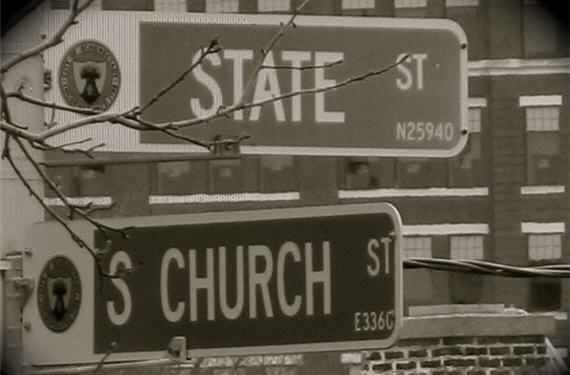

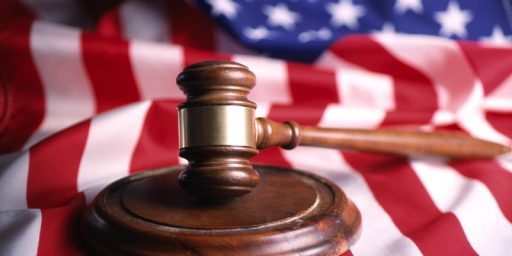

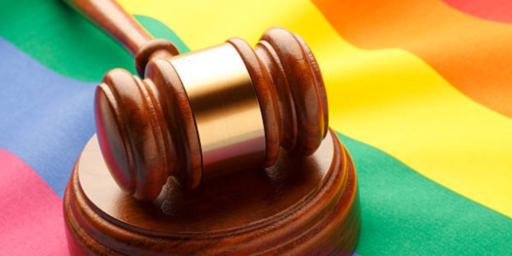
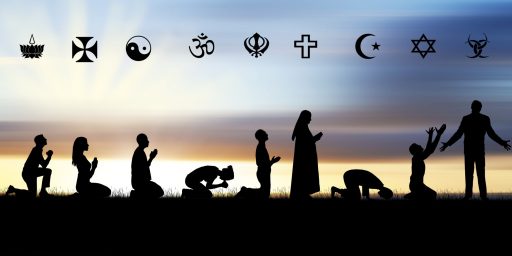
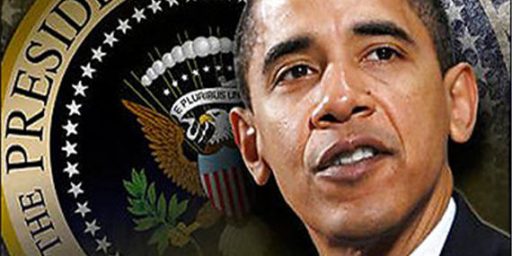
This ruling derails a lot of arguments made by anti-marriage equality organizations.
This is one of the finest treatments of an issue I’ve seen at OTB in quite some time. Superb, actually.
Just wanted to second @Drew. Doug,you’ve been doing some really nice SCOTUS analysis!
And thirded. I don’t hesitate to pile on when I think Doug (or any of the other folk here) are off-target, but it’s important to point out the good stuff too. In particular:
Yup. I can’t imagine arguing that Churches shouldn’t have the right to apply specific tests to quote-unquote “clergy”; the arguments here should have focused on whether this woman was properly classed & treated as such, or whether she should have been held only to the standards of a secular employee, and it sounds like the EEOC tried to overshoot that mark & get a broad precedent set.
Very good analysis.
Also, narcolepsy is a sign of the devil, so of course religious organizations can discriminate based on that. Ok, I can see why the EEOC took this up — it’s a case where what is legal and what is moral differ, and it made sense to see how the courts would interpret the ministerial exception.
I think its worth pausing at the historic irony that we have a court grappling with the question of what a minister is, when not a single member is Protestant.
I disagree with Sessions’ claim that the courts are the most protective institution of religious freedom. Back in the 90s when the SCOTUS upheld Oregan’s refusal to accommodate religious use of peyote, Congress overwhelming passed a law to overturn the decision. When the SCOTUs ruled parts of that law unconstitutional, Congress overwhelming passed another law to expand religious freedom as much as the SCOTUS would probably allow. I don’t believe any of that is because of the love of peyote, its because religion in a general sense is a politically attractive component of American society.